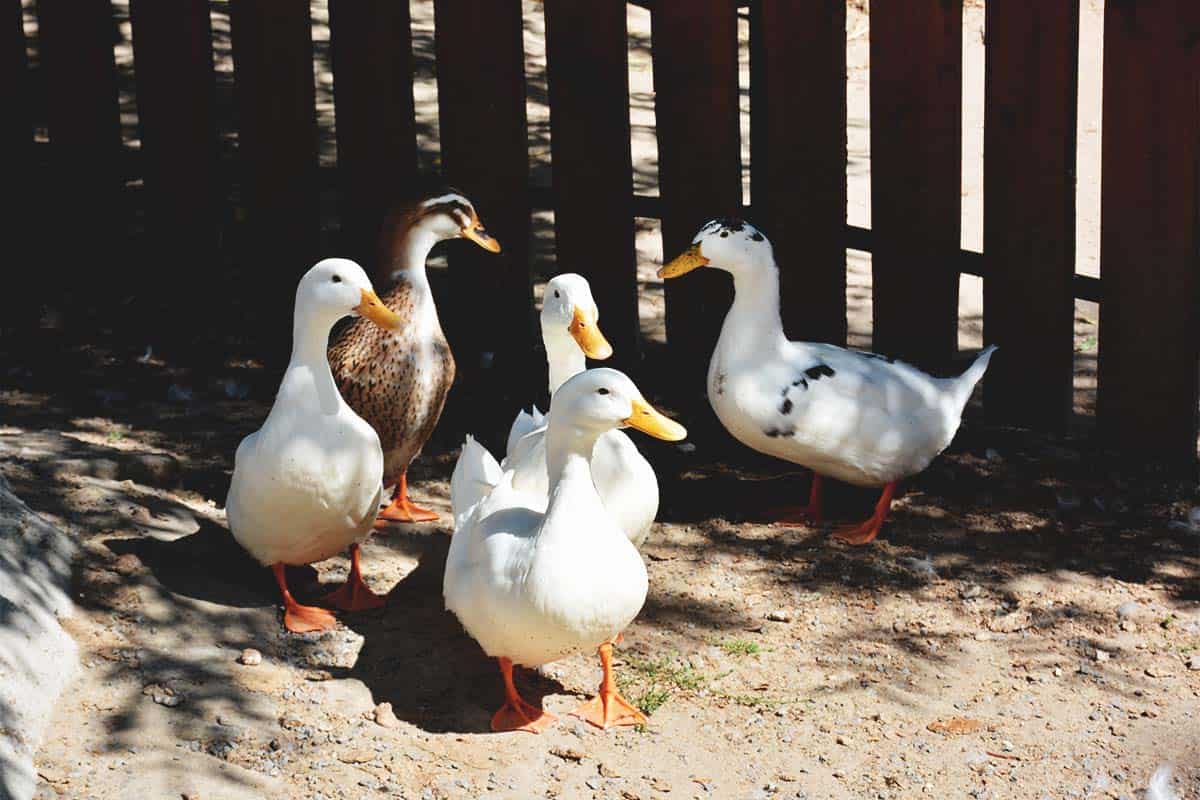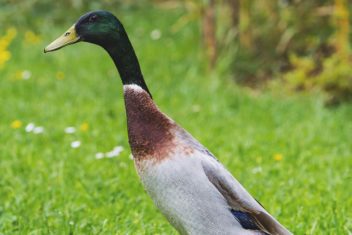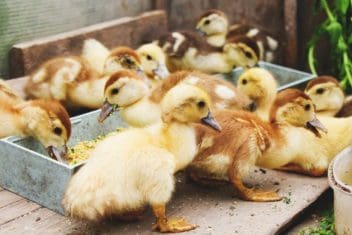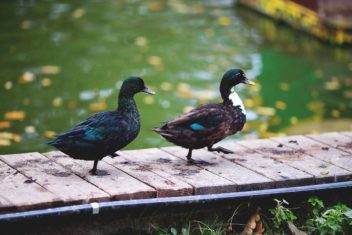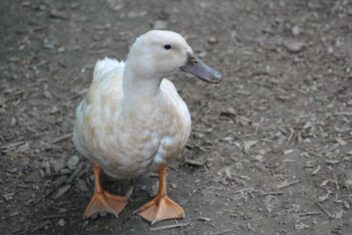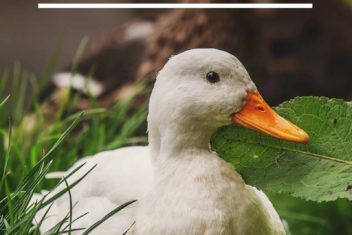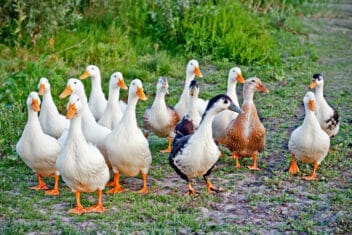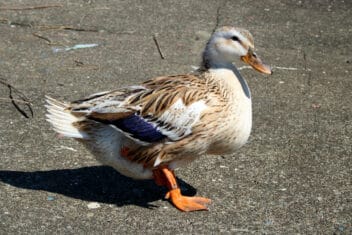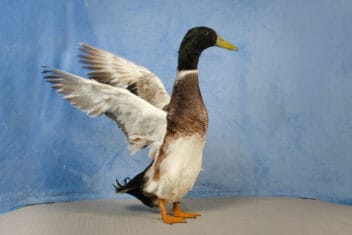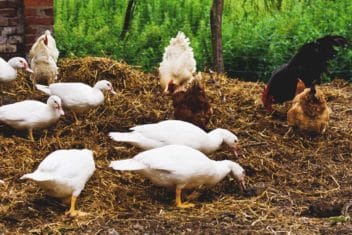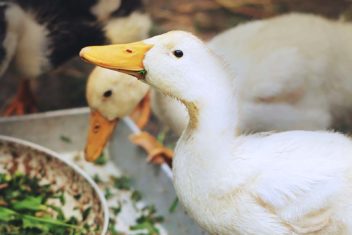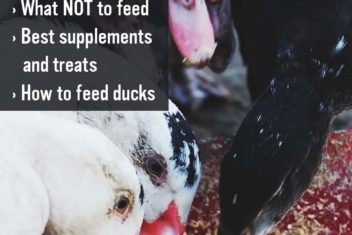I am obsessed with ducks. They were the first livestock animal I raised when I started homesteading. I’ve kept them for meat, for eggs, for their utility in improving soil, and for the sheer joy of having them.
Initially, I started with white hybrid layers for their egg production. Then, I moved on to Pekins which look similar but fatten faster and lay a little less. After that, I tried the Muscovy which some poultry keepers hail as the best all-around homestead duck out there.
Lately, I’ve been making my way through the entire duck list so that I can gain experience with all the breeds available. I have a dedicated brooder, plenty of space, and I work from home. So, trying lots of breeds is easy for me.
But for those of you who don’t have time to try them all, how do you choose the perfect duck breed for your homestead? Easy! Keep reading and I’ll give you pointers to help you narrow down your duck decision.
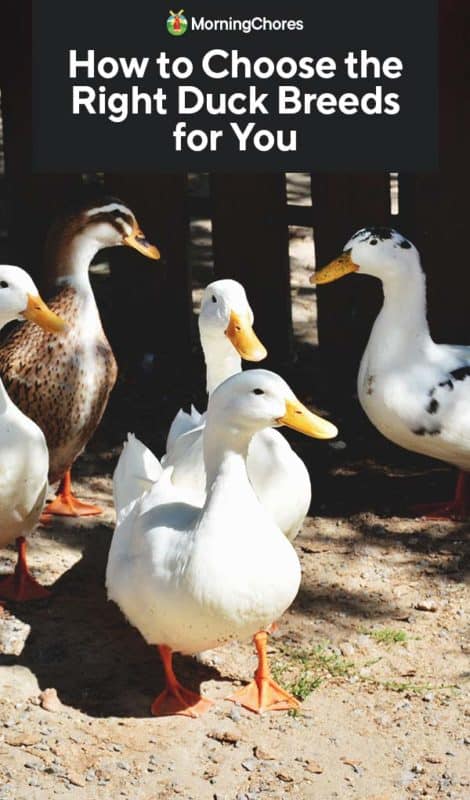
If You Are A Duck Lover
Ducks aren’t an obvious livestock choice for everyone. Most people opt for chickens because they are more common and less intimidating to raise. So, if you want ducks, that already tells me something about you.
You, like me, are a duck lover. You may love their extra rich and tasty eggs. Or maybe their delicious meat is the lure. Perhaps you love the look of them swimming in a pond.
That love, whatever drives it, is the thing that will help you narrow down the duck list to the breed that is right for you. So, take a few minutes and think about what it is that makes you love ducks and want to have your own.
Read our valuable posts on what to consider when raising ducks, building a duck house, and caring for ducks in winter to be prepared for your new adventure.
Reality Check – What If You’re Not?
Now, if I happen to be wrong, and you don’t love ducks, then let me save you some time. You’re reading the wrong post! Go check out one of our posts on chickens, goats, rabbits, or even pigs.
Ducks are not right for everyone. In fact, there are quite a few reasons why ducks aren’t a first choice for most homesteaders. The biggies are:
- Ducks are messy.
- Ducks can be loud.
- Ducks do need at least a kiddie pool to groom themselves in and will splash water everywhere.
- Ducks intentionally backwash and poop in their water and so it’s always dirty.
- Ducks have higher protein needs than chickens which makes their feed more expensive.
- Ducks are subject to more legal regulation than chickens because they are waterfowl.
- Ducks are harder to socialize than chickens.
- Ducks are harder to process for meat than chickens.
- Duck egg shells are more porous and so have a shorter shelf life than chicken eggs.
- Ducks nest in the ground which makes keeping eggs clean for collection hard.
- Duck eggs are more difficult to incubate due to high humidity requirements. They take longer to hatch. Also, hatch rates tend to be lower than easy to hatch chickens.
I could give you lots more reasons why ducks might not be right for you. But if those 11 haven’t scared you off, then you really are a duck person! That means you are ready to move on to making your breed selection.
Prioritize Your Needs
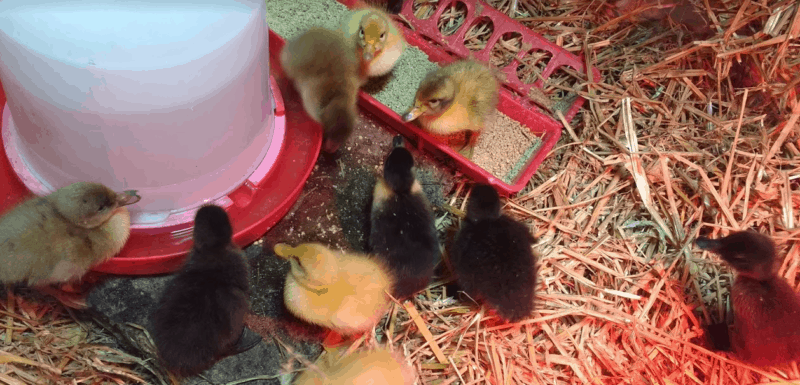
Now that you’ve got your list of reasons why you love ducks, put them in numbered order. Does your desire for delicious duck eggs trump all your other reasons? Does fertilizing your “duckquaponics” system rank # 1?
Does your mouth water at the idea of a seared duck breast and duck fat fries? Do you really just want them to improve your soil and control your slug population?
If you want it all with ducks, you can have it. There are good layers that can be used for meat and work well in different environments. However, ranking your goals will help you narrow down your selection based on what is most important to you first. Then you can focus on those other important secondary traits.
Imagine Your Future Ducks
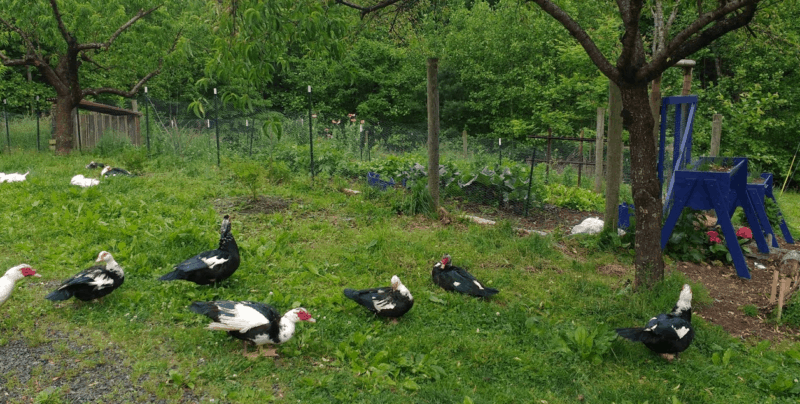
Now, that you have your prioritized purposes in mind, try to imagine what kind of life you want to give your ducks. Do you see them in their own lovely run with a charming duck house and mini-pond?
Or are they sleeping out on your deep pond to be safe from predators? Are they nesting in the brush around the pond edge and raising their own ducklings in the wild? Do you let them roam around in paddocks during the day and put them up in a protected shelter at night?
Knowing how you plan to raise your ducks will help you identify the breeds most suited to your homestead dream. For example, Muscovy’s are half-wild and are extremely well-suited to free-ranging. I’ve even had Muscovy female ducks nest in the open and raise all their hatchlings safely to maturity.
This only works though if they have total freedom of movement and lots of places to escape such as ponds, trees, thickets, over and under fences, etc. If you confine them or clip their wings, then you’ll need to protect them just as you would chickens.
Some of the heavy egg-laying breeds, such as the Khaki Campbell, are not so well-suited to total free-ranging. Because they spend an hour or more laying an egg most mornings, they are “sitting ducks” exactly when hawks are hunting. Giving those productive layers a completely secure place to lay is more ideal.
The Best Duck Breeds for the Homestead
Now, with your ranked list and your imagined environment in your mind, read through the breed highlights. Note the top duck breeds that stand out as possible options.
1. Ancona Ducks
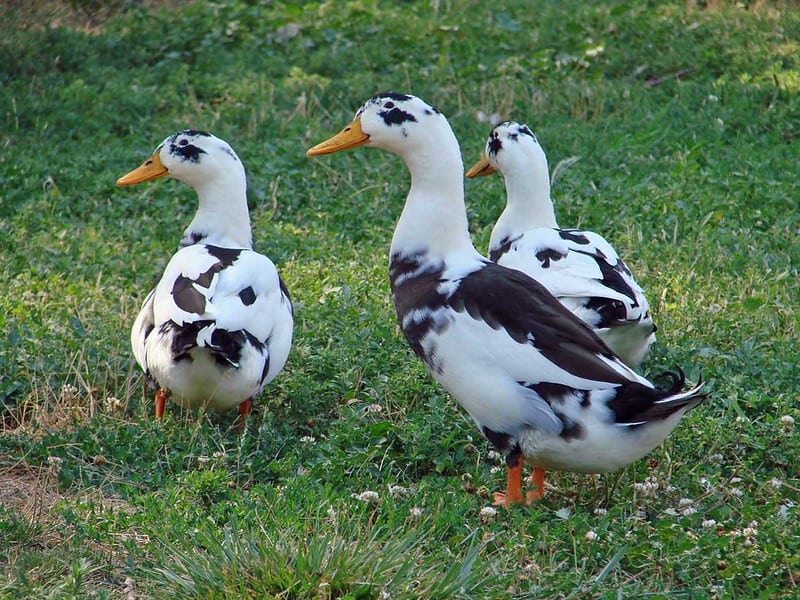
This beautiful duck originated in England. They are on the breed watch list. They are not great fliers and are better suited to use in protected pastures, deep ponds, or duck runs.
They are fairly active and will do better with a little room to run for at least part of the day. Ancona’s are excellent foragers if giving enough suitable space.
Laying ducks can produce 210-280 eggs per year and will lay some eggs in winter. Eggs are white, tinted, blue-green, and spotted.
Anconas grow fast and can be used as a meat source. Males top out at about 6.5 pounds. Females are only slightly smaller.
2. Aylesbury Ducks
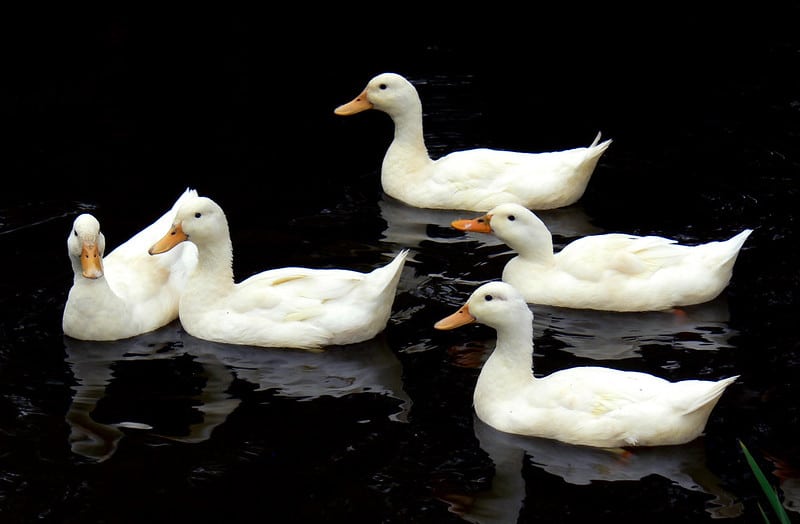
The Aylesbury Duck also hails from England. Their populations are critically low. So, if you want to help save an amazing meat duck that can weigh up to 10 pounds (drakes) and 9 pounds for ducks, this is a perfect choice.
Due to their large size and docile nature, they are better suited to protected runs. They do a fair job foraging. But you’ll need you to supply most of their feed, especially if you want to raise them efficiently for meat production.
The lay 35-125 extra-large white or slightly large eggs, including a few winter eggs. They are not particularly great mothers but are good for meat as their pink skin presents well on the dining table.
3. Buff or Orpington Duck
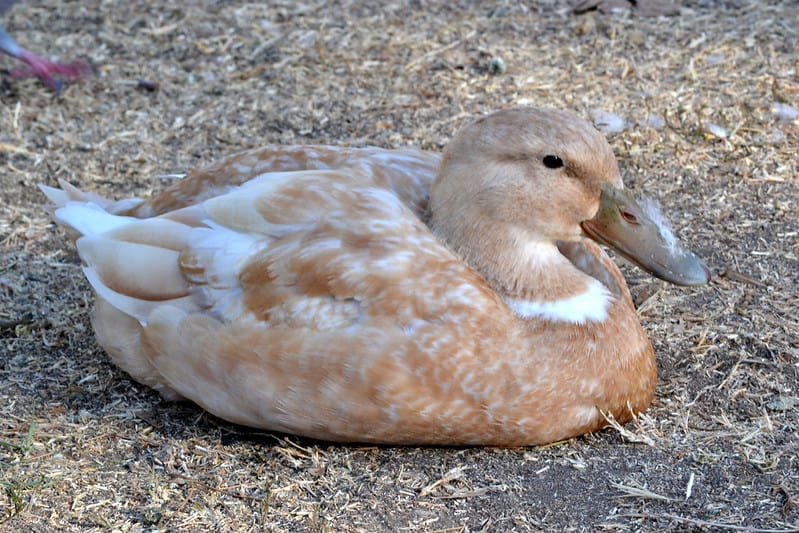
The Buff, also called Orpington, originated in England. Their population is currently considered threatened.
They are wonderful for meat and eggs. They weigh in at 8 pounds for drakes and about 7 pounds for female ducks. Buffs also have light pin feathers which means they dress out well.
Their eggs are white or tinted, large, and production ranges from 150-220. They do lay some winter eggs. Also, they make fair to good mothers.
Buffs are easy to manage ducks that like to forage. You can keep them in large protected runs. They also work well on protected pasture and natural ponds.
4. Campbell Duck
The Campbell ducks are another English native. As the premier backyard laying duck, they are easy to buy. With egg capacity ranging from 250-340 eggs a year, for best egg production, this is your duck.
Their eggs are large and white to tinted in color. The birds only weigh 4 – 4.5 pounds. That means lower feed costs than with larger-bodied layers.
These ducks are also excellent foragers and do well on ponds or in protected pastures. However, if you want to collect all the eggs, it’s better to keep them confined until about 9:30 in the morning. That will ensure their safety while they lay and give you a chance to collect their eggs from the run or house.
There are also mixed reports on how well these ducks fly. Generally, once they begin laying and achieve full weight, they don’t fly much. Some breed lines may be more flighty than others, though. So, ask your breeder for more details on the kind of flight activity they see with their line of Campbells.
Note: You can also consider the Golden Cascade duck as another common alternative to Campbells. They are not yet recognized as a breed by the American Poultry Association (APA). However, they also make great layers.
5. Cayuga Duck
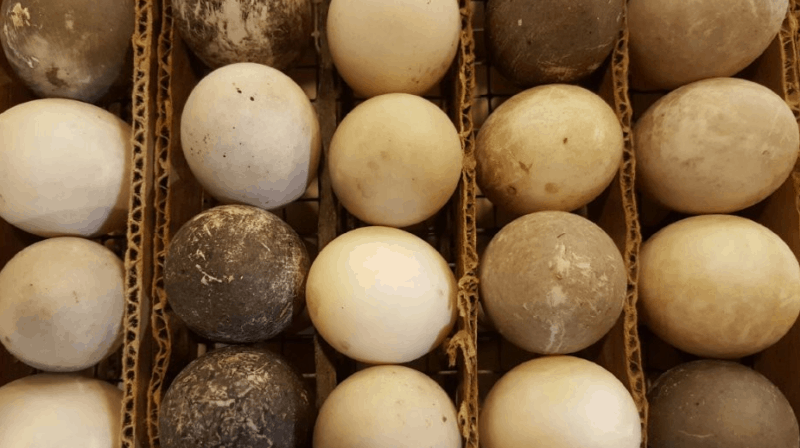
The Cayuga is an American originated duck on watch status. They are raised for meat and eggs. With mature weights of 7-8 pounds, they make good-sized meat birds. However, they are very dark-skinned which is not preferred by commercial processors.
Even if you don’t want to raise Cayugas ducks for meat, they lay about 100-150 eggs per year, mostly during warm weather. Their interesting eggs can also start out black in color and fade to white by the end of the laying season.
These ducks make good mothers. They do well in ponds, protected pastures, and large-sized runs. They have good foraging ability. Make sure they have lots of shade to keep these dark feathered birds cool in warm weather.
6. Dutch Hookbill Duck
This critically endangered duck breed popularized in the Netherlands needs to be preserved. Their hooked bill is a unique feature that makes them perfect for beautiful backyard duck displays.
These ducks weigh from 3.5 to 6 pounds depending on the breed line. They lay large white to blue-green eggs at a rate of 100-225 per year. Some breed lines are more productive than others, so check with your breeder on egg averages.
They do fly, which gives them some natural predator protection. They also do well on natural ponds and pastures. In their native habitat, they were often found along canal edges. They are excellent foragers and can get much of their own food if given enough space to roam.
7. Magpie Duck
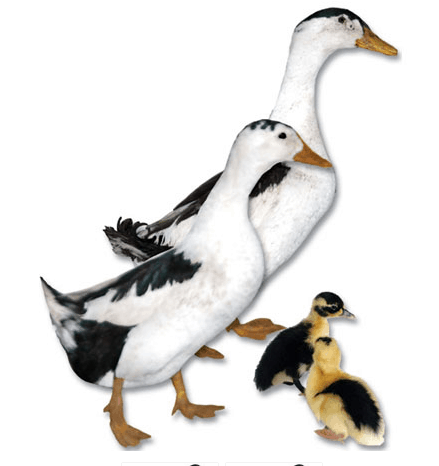
Unlike the Magpies from the crow family, known to harass chicken flocks, the Magpie duck is not a pest. It does share similar black and white coloring though, which might have something to do with the breed name.
The Magpie duck comes from Wales and its population is threatened. So, if you are looking for a great layer (200-290 eggs per year) that also doubles as a meat duck, Magpies might be for you.
Their eggs are white and medium-sized. The birds also weigh 5 to 6 pounds which makes them a good mid-weight meat bird. They don’t fly well, but they are excellent foragers and do well in natural pond or pasture environments.
The males of this breed are a bit aggressive, so keep no fewer than 5 females to every male to avoid over-mating. You’ll also want to spend a fair amount of time taming these ducks when young because they still have their part wild nature and can be high strung at times.
This breed takes a little more work to manage on the homestead. However, their foraging aptitudes and dual utility make them an excellent choice for confident livestock caretakers.
8. Muscovy
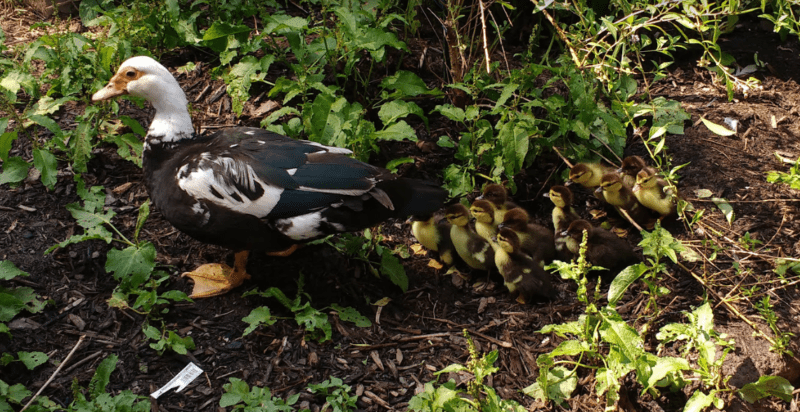
The Muscovy is not exactly a duck. They are unrelated to the wild Mallard from which all other domestic ducks are related to. If you cross-breed a Muscovy to the other breeds on this list, the offspring will be sterile, similar to mules. For that reason, Muscovy crosses are often called ‘Moulards,’ the French word for mule.
They hail from South America. Unlike most true ducks, they are only cold hardy down to about 10℉. Wild Muscovies are all dark-colored. The white Muscovy ducks have been bred to have more appeal as a commercial meat source. Your basic backyard Muscovy tends to have mixed white and dark plumage.
The Muscovy is fairly common, especially in warm areas with lots of waterways and good forage. Their primary use is for meat. Males top out at 12 pounds while females stay a more diminutive 6-pound size.
Males are aggressive maters. Ratios of at least 5 females to 1 male are best. Fights over females and hierarchy can get brutal. Other than when fighting, these ducks are extremely quiet. Even the females don’t quack. They instead hiss and use elaborate head gestures to communicate.
The females usually make great mothers. Though, I’ve had a few hatch out their entire clutch of eggs after 35 days and leave their ducklings untended. (In that case, I take over.) They lay eggs mainly during the mating season. They hide their nests and go broody once they have around 10 eggs in their clutch. Incubation takes 35 days, rather than 28 days for mallard-related ducks.
These birds are half-wild. But if you want a self-renewing meat source and are fearless at processing, this breed has the best chance of taking care of itself on warm climate homesteads.
9. Rouen Ducks
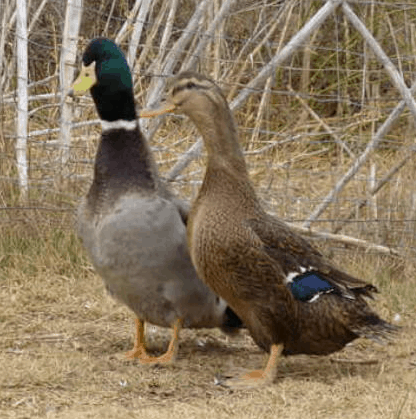
The Rouen ducks originated in France sometime before the 1800s. The traditional, not commercial style, Rouens are on the breed watch list.
These are technically meat ducks and can weigh in between 8-10 pounds. However, they are also a lovely breed to keep as pets. Their beautiful coloration and affable personalities put them on my favorites list for garden ducks.
Once they put on a little weight, they don’t fly. So, like the very popular and common Pekin ducks, they are easy to keep from your planter areas even with very short fences or the use of raised garden beds. Their large size also makes them less interesting to aerial predators (though not immune, of course).
Rouens are seasonal layers and only produce around 60-120 eggs per year. They also have a tough time setting nests due to their large size. They may need a pond to mate properly, according to the Livestock Conservancy.
These might not be the easiest choice for a self-sufficient meat supply. But if you have the right conditions, these are great table birds for epicurean homesteaders. If not, just keep a few as pets for the pleasure of having them.
10. Runner Ducks

Runner ducks hail from Malaysia. Their population is currently recovering due to revitalized interest in raising them on homesteads everywhere. As their name implies, these birds don’t fly. Instead they run quite quickly compared to other ducks due to their upright stature.
My runners also jump. They occasionally get up on obstacles that are 1-2 feet high, but not much higher. These ducks only weigh about 4 – 5 pounds. Their lightweight and upright stature make it easier for them to navigate small spaces than most other duck breeds.
They are often used in rotational paddocks or in small gardens to add fertility and not crush plants. The key to using them is not to overstock. Stick to around 1 duck every 800 square feet of space. Also, move them often so they don’t create mud patches.
These ducks also lay about 200-250 eggs per year. This makes them a great choice for egg production too. They typically do not make good mothers though. Expect to do your own incubation or have a more broody duck breed to set runner duck eggs for you.
11. Saxony
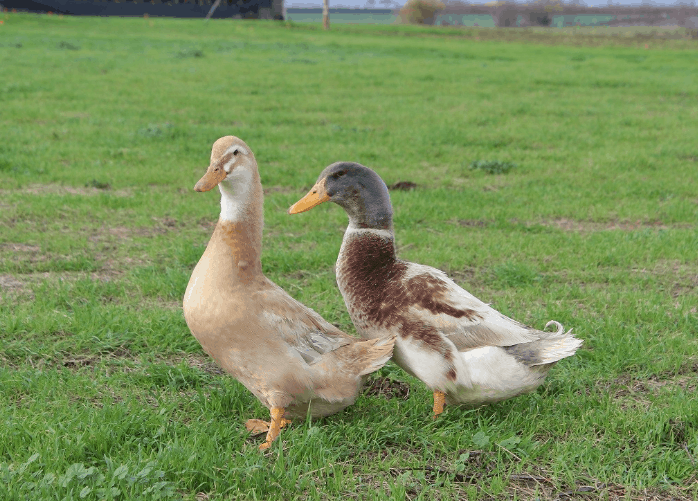
The Saxony duck hails from Germany and their population is threatened. Some duck keepers consider this large-sized duck, average 8-9 pounds, to be the best dual-purpose large breed. They can lay 190-260 extra-large, white to blue-green eggs per year.
They do take some time to raise out for meat. Yet, the meat is high-quality, very lean, and dresses out nicely. They also make fair to good mothers which means they can be a good self-renewing meat source.
Additionally, despite their large size, they are good foragers. They are docile and easy to manage which makes them well-suited to protected paddocks or large runs. They also have a majestic appearance that appeals to exhibition breeders.
12. Silver Appleyard
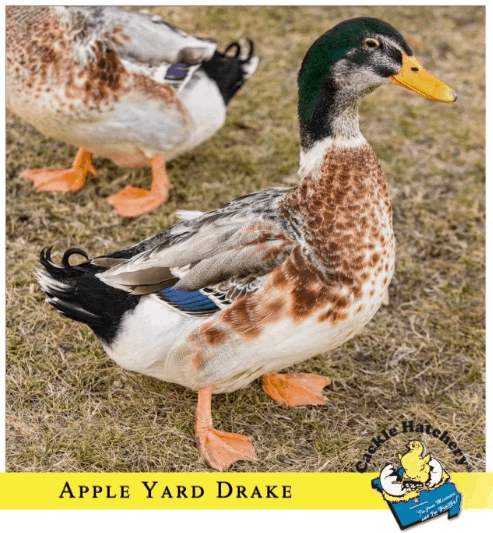
The Silver Appleyard is another English native whose population is threatened. For homesteaders wanting to help preserve a great dual-purpose duck breed, this is a great option.
Similar to the Saxony, they weigh in between 8-9 pounds. They are noted for having a deep, wide breast which makes them preferred for meat production. They also lay 200-270 large, white eggs per year.
Many homesteaders consider this breed to be the perfect pasture duck. They are good foragers. They are easy to manage. Some do have fair to good mothering ability. Yet, they aren’t overly broody.
Their beautiful appearance and useful qualities make them an excellent all-purpose duck for self-sufficient homesteaders on protected pastures or ponds.
13. Swedish Duck
The Swedish Duck is a beautiful breed from Germany and Poland, perfect for free-ranging. They are excellent foragers and love to be active. They aren’t so thrilled about confinement though.
They can lay 100-150 large white to green eggs per year. They also make great mothers. Females weigh about 6 pounds while males top out at 8 pounds, which makes them a good choice free-range meat duck.
These come in blue or black color choices. They are also excellent for really cold climates.
14. Welsh Harlequin Duck
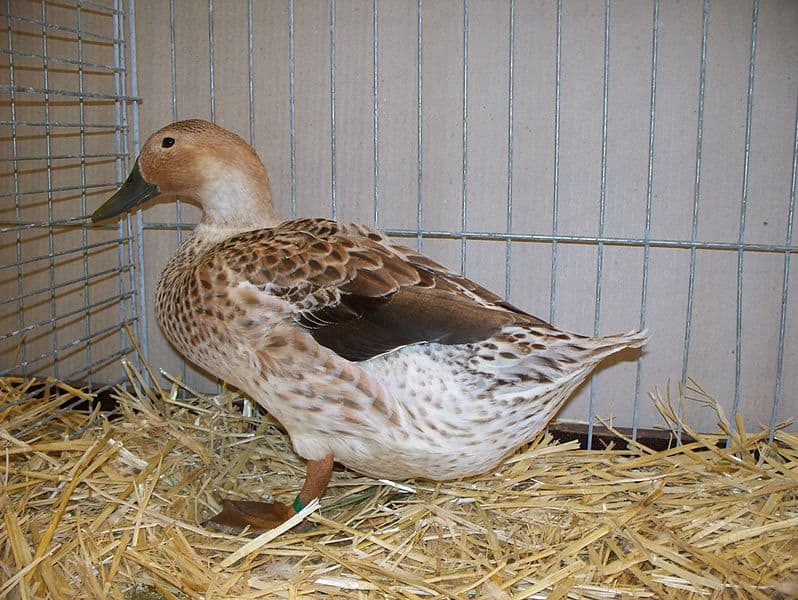
As their name implies, the Welsh Harlequin Duck hales from Wales. Their population is on the watch list. But, now that it’s getting easier to buy this breed from hatcheries, they are likely to recover quickly. Their beautiful appearance and sweet personalities make them one of my favorite breeds.
They can lay between 240-330 white to tinted large eggs. Plus, since they only weigh in at around 5 pounds, their feed costs are easier to manage than for larger layers. They can also be used as a meat duck because they dress well.
These are active birds with excellent foraging capacity. So, they tend to do better on pasture, in paddocks, or on natural ponds. You can keep them in large duck runs too and they also make good mothers.
Their small size, light coloring, and gentle natures make them more prone to predation than some of the other dual-purpose duck breeds. Overall though, these lovely ducks are worth the effort to keep them safe.
15. Other Breeds
This breed list is not comprehensive. There are other interesting ducks like the Shetland from Scotland that may be more available soon. Exhibition ducks like the White Crested or Call ducks can be fun to keep for novelty purposes too.
The Pekin is a meat classic and a fairly good layer. There are also hybrid ducks used for heavy egg production. Those are great options for beginners. Trust me though, once you get hooked on ducks, you’ll find the heritage breeds with more history worthwhile to raise even if they lay a little less or don’t fatten quite as fast.
Choose The Best Duck Breed For You
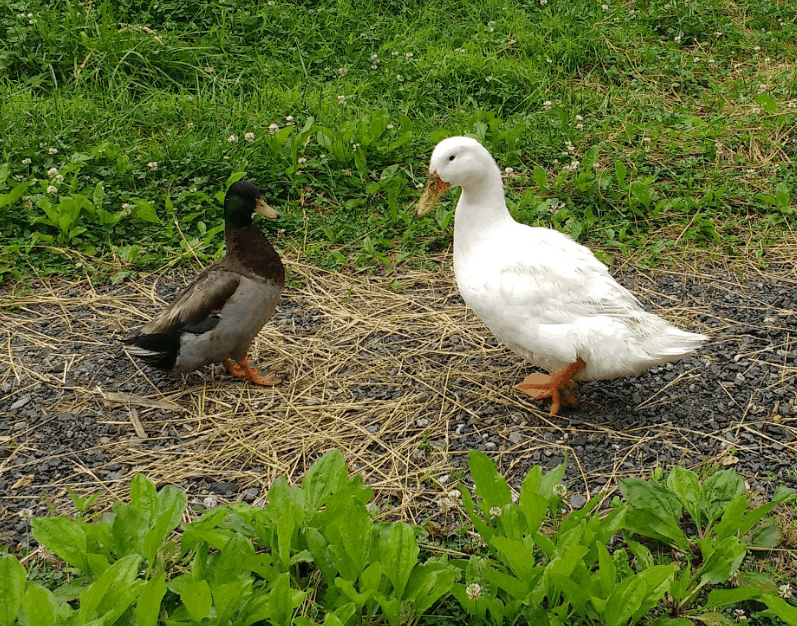
Now that you’ve identified your main reason for keeping ducks, the ways you imagine raising them and have identified a few breeds that might work for you, it’s time to do a bit more work.
This is just a primer on the breeds. So, before you make your final selection, you’ll want to do more intensive breed research on your top picks. Check with breeders and keepers of those breeds to make sure their experience matches up with what you are hoping for.
Then, make sure to place your orders early. Ducklings go fast in spring. The rarer the breed, the more limited the buying options.
Oh, and welcome you to the duck lovers club!
